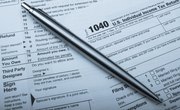In general, any profit you make from selling a piece of real estate is subject to federal capital gains tax, although the sale of a home is a big exception in most cases. When a real estate sale produces a taxable capital gain, the tax rate you pay depends on two factors: how long you owned the property and your income tax bracket. Capital gains taxes on real estate can be long or short-term, and vary depending upon how long you held the property prior to its sale.
What Is Taxable?
Capital gains tax applies to the difference between your “cost basis” in a piece of real estate and the sale price you receive for that property. Cost basis is what you paid for the property plus any money you’ve spent to improve it. If you had a cost basis of $100,000 for a property, for example, and then sold it for $125,000, you would have a capital gain of $25,000.
Exception for Homes
You don’t have to pay capital gains taxes on the first $250,000 in profit from a home sale – or the first $500,000 if you’re married filing jointly – if you meet certain criteria.
To qualify for this “exclusion,” you must have owned and lived in the property for at least two years total out of the five years preceding the sale. However, the house must be your primary residence, not one you lived in occasionally. You can take this exclusion once every five years.
Read More: Form 1040: What You Need to Know
Short- and Long-Term Gains
If you own a piece of property for a year or less before selling it, any taxable gain you make from the sale is classified as a short-term capital gain. If you own the property for more than a year, it’s a long-term gain. Long-term gains are taxed at significantly lower rates than short-term gains.
Short-Term Capital Gains Rates
The capital gains rate for short-term gains is the same as your tax bracket rate – that is, the highest tax rate charged on your ordinary income. If you were in the 24 percent bracket, for example, you’d pay 24 percent on short-term gains.
The tax brackets (and short-term rates) for tax year 2021 and 2022 are: 10 percent, 12 percent, 22 percent, 24 percent, 32 percent, 35 percent and 37 percent. Tax rates can be changed by Congress, so check with the Internal Revenue Service for updated rates.
Long-Term Capital Gains Rates
For the 2021 and 2022 tax years, long-term capital gains rates are divided into three brackets, those being 0 percent, 15 percent and 20 percent. Individuals making up to $40,400 in 2021 will not pay any tax on long-term capital gains, while those making more than $445,850 and up will pay 20 percent long-term capital gains tax.
Net Investment Income Tax
An additional tax applies to certain higher-income taxpayers that may tack an additional 3.8 percent onto their capital gains tax rate. The Net Investment Income Tax applies to single taxpayers with a modified adjusted gross income of $200,000 and married couples with income above $250,000.
For 2021, if a taxpayer were in the top tax bracket, for example, this tax would increase the long-term capital gains rate from 20 percent to 23.8 percent and the short-term rate from 37 percent to 39.8 percent.
References
Writer Bio
Cam Merritt is a writer and editor specializing in business, personal finance and home design. He has contributed to USA Today, The Des Moines Register and Better Homes and Gardens"publications. Merritt has a journalism degree from Drake University and is pursuing an MBA from the University of Iowa.

